A comprehensive guide to understanding and enhancing the customer lifecycle
Discover strategies to enhance the customer experience at every lifecycle touchpoint, from awareness to advocacy.
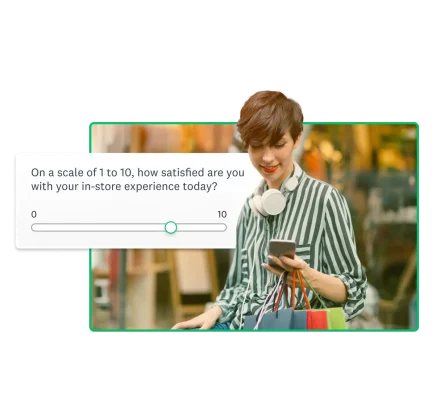
The customer journey is an interconnected stream of touchpoints that your customers experience. By understanding how your customers change and shift as they move through your business’s customer lifecycle, you’ll be able to relate to them more effectively, create effective content and enhance their customer experience (CX).
In this article, we’ll discuss the customer lifecycle, outline what you need to know about each of its stages and discuss how you can measure customer satisfaction across the entire customer journey.
What is the customer lifecycle?
The customer lifecycle refers to the stages a customer goes through during their journey with your company, from the initial interaction to long-term engagement.
It starts with their first contact with your organisation and progresses through five key customer lifecycle stages:
- Awareness
- Consideration
- Purchase
- Retention
- Advocacy
At each of these stages, customers engage with your business in unique ways. Understanding customer lifecycle stages and how to interact with your audience at each point is essential for:
- Creating effective customer experience strategies
- Developing targeted marketing efforts
- Nurturing customer relationships
- Fostering long-term customer loyalty and retention
What is a customer lifecycle strategy?
A customer lifecycle strategy is the process of outlining relevant marketing tactics and practices that your business will use to interact with customers at different stages of their lifecycle. A customer who has only seen your brand once or twice on social media is going to be a lot less trusting than a seasoned customer, meaning they require different communication styles and strategies.
Developing a comprehensive customer lifecycle strategy will enable your business to enhance customer communication, streamline its pathway to becoming a loyal customer and improve the customer experience with your brand. Effective customer lifecycle strategy planning is key to enhancing customer loyalty and improving your bottom line.
Why is improving the customer lifecycle important?
By gaining a better understanding of your customers at each stage of the customer lifecycle, you can enhance their experience and ensure that they have favourable interactions with your company. Improving the customer experience is vital, as customers with higher levels of satisfaction translate to better sales, increased loyalty and more word-of-mouth marketing for your company.
The State of CX report by SurveyMonkey explored the CX landscape, revealing several reasons why your business should focus on streamlining the customer experience:
- 91% of customers are likely to recommend a company after a positive experience with them.
- 89% of CX pros believe that poor customer experience is a leading contributor to churn.
- 57% of consumers would stop doing business with a company after a poor experience.
- 82% of consumers have abandoned an online purchase due to a negative experience.
- 98% of consumers say that customer service and support are important.
From gaining new customers to retaining current ones, a streamlined and supportive customer experience is the key to success.
What are the five stages of the customer lifecycle?
The five stages of the customer lifecycle are awareness, consideration, purchase, retention and advocacy. Each core stage reflects a group of customers in a distinct period of getting to know your brand.
The first stage is for customers who are only just starting to hear about your brand, while the last stage is for seasoned customers who are loyal to your company. Let’s explore each stage, demonstrating what sort of customer exists in each and how you can adjust your marketing strategy to improve the customer experience at every stage.
Stage 1: Awareness
The first stage of the customer lifecycle is awareness. The awareness stage is for customers who are only just starting to hear about your brand. They might contact your company because they saw an advertisement or read a social media post about it, or maybe because it was recommended by a friend or colleague.
Here’s what you need to know about the awareness stage of the customer lifecycle:
- Typical touchpoints: Awareness customer touchpoints include online advertisements, posts on social media, ranking blog posts, influencer marketing and personal recommendations.
- Ideal marketing strategies: Create high-quality blogs and posts that cultivate knowledge for your target audience, optimise your content with SEO strategies, conduct outreach to influencers related to your industry and run targeted ads on social media for your ideal customer segment.
- Example of awareness in action: A business wants to generate new potential leads, so it contacts an influencer specialising in its niche area. The influencer tries its products and creates a video about them, showing them off to their audience.
A good first impression is essential for laying the foundations for your future customer relationship.
Stage 2: Consideration
The consideration stage of the customer lifecycle is for customers who know who you are, and what products or services you offer, but aren’t sure whether they’ll buy. This stage is about scoping out the wider industry, comparing your products to those of competitors and seeing whether you meet their needs.
Here’s what you need to know about the consideration stage of the customer lifecycle:
- Typical touchpoints: The main touchpoints of the consideration stage include product reviews, in-depth demos or feature showcases, blog posts that explain your products, other customer testimonials and free trials.
- Ideal marketing strategies: At this stage of the customer lifecycle, you need to convince a customer that you’re the best choice for them. To do this, you should scale your middle-of-the-funnel content marketing, which shows off your products, cultivate lots of testimonials and product reviews and launch retargeting ads to show your product to interested parties.
- An example of consideration in action: A business sends a free trial coupon to a customer who has signed up for its mailing list, accompanying it with a demo that shows its most impressive and useful features.
The consideration stage is for showing off why you’re the best in the business. What do you do differently or offer that differentiates you from your competitors? Identify these factors and create marketing campaigns around them.
Stage 3: Purchase
After a smooth consideration stage, your customer is now ready to commit to your business. In the purchase stage of the customer lifecycle, a consumer becomes your customer once they have made their first purchase. This stage is all about making the purchase experience as easy as possible, streamlining payment and ensuring that they receive their product in a timely manner.
Here’s everything you need to know about the purchase stage of the customer lifecycle:
- Typical touchpoints: Your main touchpoints during the purchase stage will be your website’s checkpoint pages, your customer support team and any sales representatives involved in the process.
- Ideal marketing strategies: The main customer lifecycle strategy in the lifecycle stage is streamlining your checkout process. Your marketing team should conduct A/B testing on these pages, offer multiple payment methods and reduce any steps involved that could act as a barrier to purchase.
- Example of purchase in action: A marketing team runs several strategy tests to explore potential ways to improve conversion rates, such as offering free shipping, a first-time buyer’s discount and sending coupon codes to those who subscribe to the company’s email mailing list.
Although the purchase stage of the customer lifecycle is when a customer finally crosses the finish line, the race is still far from over. This is the starting point of a much longer relationship with your customers, which brings us to the retention stage.
Related: Launch a purchase satisfaction survey to understand customer satisfaction during the purchase stage.
Stage 4: Retention
A loyal customer is infinitely more valuable to your business than one who makes a one-off purchase. Fostering a sense of loyalty and enhancing customer retention are the main goals of the retention stage of the customer lifecycle.
Here’s everything you need to know about the retention stage of the customer lifecycle:
- Typical touchpoints: Touchpoints in the retention stage include interactions with customer support, any loyalty schemes that you launch, personalised offers and discounts, regular communication via email and newsletters, and other personalised communication streams.
- Ideal marketing strategies: Launching a loyalty programme is an effective way of creating an incentive for repeat purchases. Beyond that, improving your customer service so that your staff are active, available and supportive will help enhance a customer’s experience with your brand and their satisfaction.
- Example of retention in action: A business sends out personalised emails to customers offering them a special discount for their birthday or a discount on their next purchase as a thank-you gesture.
Going the extra mile to show that you appreciate your customers is the most important aspect of the retention stage. If your customers don’t get the impression that your business cares for them, then they will go elsewhere.
Related reading: The ultimate guide to customer service.
Stage 5: Advocacy
The final, ongoing stage of the customer lifecycle is advocacy. At this stage, you cultivate a lasting relationship with your customers and their brand loyalty extends to recommending you to friends and family.
Here’s everything you need to know about the advocacy stage of the customer lifecycle:
- Typical touchpoints: Touchpoints for the advocacy stage include direct communication with customers, reviews on social media, referral programmes and collecting feedback with surveys.
- Ideal marketing strategies: Ask for feedback and written testimonials for your brand, create paid referral programmes to streamline word-of-mouth (WOM) marketing and ask loyal customers to become advocates for your brand in a paid sense.
- Example of advocacy in action: After being in the retention stage and continually experiencing a high degree of care and attention, a customer decides to recommend your brand to their close friends. This word-of-mouth marketing is a product of your earlier efforts across all customer lifecycle stages.
The advocacy stage lasts as long as your company can keep offering a flawless customer experience to its customers. While this is the final stage of the customer lifecycle, it does not usually end, as customers already trust and rely on your brand.
Related reading: What is customer advocacy?
How to collect feedback at every stage of the customer lifecycle
Although the ideal customer lifecycle may vary across organisations, it’s always essential to understand your customers’ perspectives.
Creating a customer experience pyramid – where you solicit feedback at key touchpoints, refine your customer support process and enhance the overall experience – can improve your management of every lifecycle stage.
You can leverage SurveyMonkey to quickly gather customer feedback using our customer feedback survey templates, which are tailored to each stage of the customer lifecycle.
Let’s explore three common customer feedback surveys to help you start monitoring the customer lifecycle.
No. 1: NPS
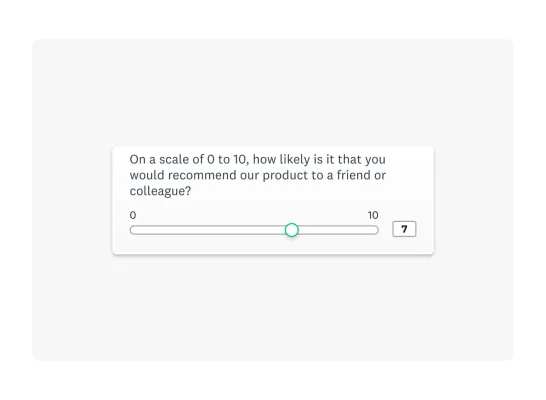
The Net Promoter Score® (NPS) survey is the gold standard for measuring customer loyalty. With a single question, organisations all over the world quantify their customer loyalty by using this core customer experience metric.
Businesses use NPS surveys to collect data about whether or not their customer experience efforts are paying off. Additionally organisations can benchmark NPS to track improvements or declines in customer satisfaction, identify areas for enhancement and establish an iterative process that continuously refines the customer journey based on data-driven feedback.
Examples of when to solicit your NPS at different stages of the customer journey:
- Consideration: After product onboarding, to gauge initial satisfaction
- Purchase: After a major transaction, to assess the buying experience
- Retention: Post-support interaction or renewal, to measure ongoing satisfaction
- Advocacy: After a referral or recommendation, to capture the likelihood of word-of-mouth referrals
Get started with the SurveyMonkey NPS Survey Template.
No. 2: CSAT
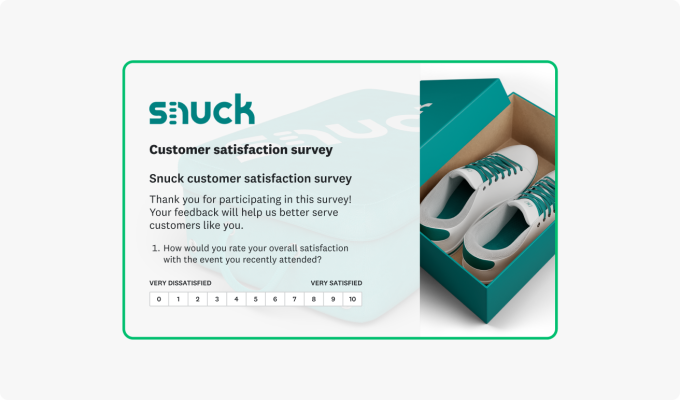
Customer satisfaction surveys, or CSAT surveys for short, measure customer happiness with your company and the services or products that it offers. A CSAT survey asks customers to rate their satisfaction with your business on a scale of 1 to 10.
The results of a CSAT survey will help you quantify how satisfied your audience is with your business’s overall offerings. By monitoring movements in your CSAT score over time, you can demonstrate the impact of your customer experience programme efforts, helping to create a better experience for your customers one change at a time.
Examples of when to solicit your CSAT score at different stages of the customer journey:
- Awareness: After initial contact with customer service or support
- Consideration: After interacting with a sales rep or during a trial period, to uncover their likelihood of buying
- Purchase: Immediately following a purchase or transaction, to measure the buying experience
- Retention and advocacy: Post-renewal or after an upgrade, to understand factors influencing repeat purchases and long-term loyalty
Get started with the SurveyMonkey Customer Satisfaction Survey Template.
No. 3: CES
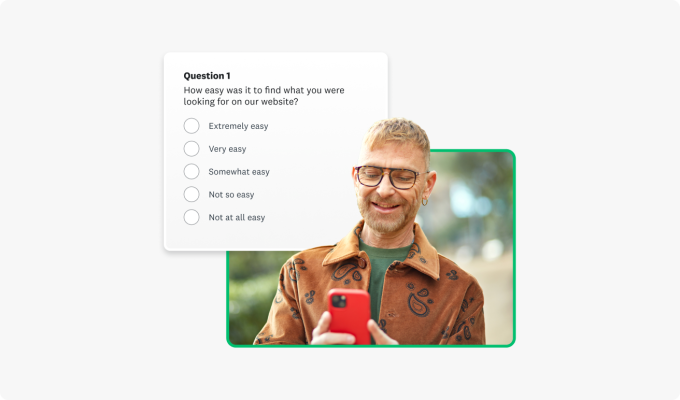
The customer effort score, also known as the CES, is a survey that measures the relative effort required to complete certain actions with your business. You can use the CES to measure the ease of tasks such as purchasing, communicating with support or using your website. CES surveys identify difficulties in your customer lifecycle and streamline them.
Examples of when to solicit your CES at different stages of the customer journey:
- Consideration: Measurement of how easy it was for customers to find information on your website or complete a product demo
- Purchase: Immediately after a transaction or sign-up process, to assess the effort required to complete the purchase
- Retention: Following a support interaction, to understand the effort needed to resolve their issue and reveal whether their experience affected their likelihood of repurchasing
- Advocacy: After a referral process or customer reference call to see how easy it was for customers to recommend your product or service to others
Get started today with the SurveyMonkey Customer Effort Score Survey Template.
Key customer success lifecycle metrics
Measuring the customer experience is the first step towards improving it. Knowing which metrics to measure and how to calculate them will offer you quantitative insight into your customer experience programme.
Here are some of the most important customer experience metrics.
Customer lifetime value (CLV)
Customer lifetime value is a metric that describes the total value that a customer has generated for your business throughout their entire time with your company. As customer loyalty increases, your customer lifetime value will also increase as customers repeat their purchases over months and years.
Calculating customer lifetime value is important as it provides insight into how customer satisfaction affects your bottom line.
Customer retention
The customer retention rate is the percentage of customers who stay with your business over a certain period of time. High customer retention rates suggest that your customers are happy with your business and will continue to buy from it for an extended period of time..
High customer retention rates translate into improved CLV, which in turn helps to enhance your bottom line. Measuring customer retention can provide insight into how small changes in your customer experience programme have major impacts on your customers and whether or not they return to your business.
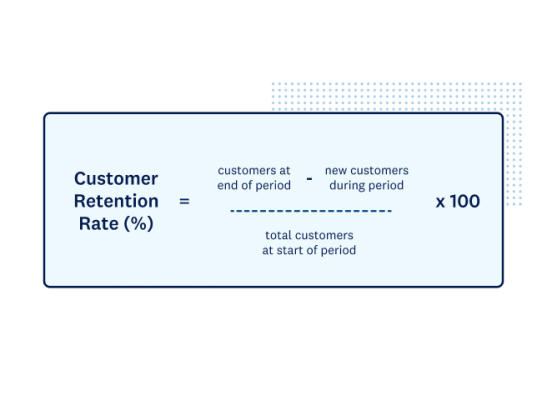
Customer churn rate
Customer churn is the total number of customers lost over a certain period of time. Customer churn goes hand in hand with customer retention rates. When you have high customer churn, it’s a sure sign that there is something about your products, services or company as a whole that has upset your customers.
Investigating spikes in churn or high churn rates by collecting customer and churning customer feedback is vital for enhancing customer retention in the future. Improving churn and actively measuring it over time should be a top priority for every business.
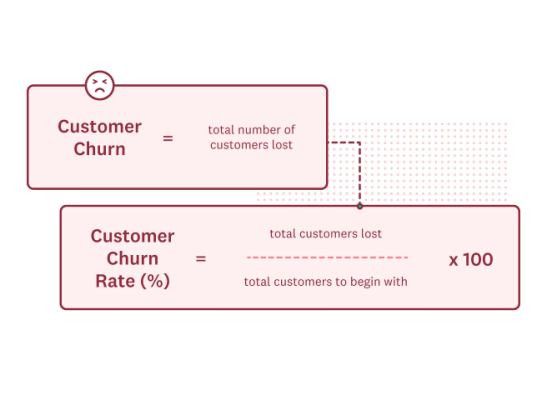
ROI of customer service
Your customer service team is on the front lines of customer support, ensuring that your customers have a pleasant and smooth experience with your company and its products. Investing in customer support is vital, as these people can significantly shape a customer’s perspective of your business.
Calculating the ROI of customer service is a useful exercise to carry out regularly in order to obtain a direct figure that you can show to stakeholders to justify larger investments in your customer experience.
3 tips for customer lifecycle management
Customer lifecycle management is the process of streamlining touchpoints across each stage of your customer lifecycle. By creating frictionless experiences with your company, your customers will naturally flow from one lifecycle stage to the next, improving everything from conversion rates to retention.
Here are some of our top strategies for enhancing the customer lifecycle management process.
No. 1: Establish a customer feedback programme
Building a customer feedback programme is an effective way of enhancing every stage of your customer lifecycle. Feedback provides clear insight into what you do well and where you could improve, creating a roadmap for improved customer interactions.
There are several benefits associated with creating a customer feedback programme:
- Enhance customer satisfaction: Streamline your customer lifecycle by enhancing your customer experience with feedback, leading to high rates of overall satisfaction.
- Improve products and services: Identify areas where you can improve based on customer feedback.
- Foster strong relationships: Asking for feedback from loyal customers and taking action based on it will show your customers that you care, thus enhancing your relationships.
No. 2: Streamline feedback management
As you enhance your customer feedback programme, your business will have to deal with a lot of feedback. If you’re not careful, this can quickly become an administrative nightmare that lets opinions slip through the cracks and feedback loops open.
There are several benefits associated with streamlining feedback management:
- Remove data silos: Creating a centralised feedback management system will help to remove data silos in your business and keep everyone on the same page.
- Improve communication: When you have an effective system to manage feedback, you can tag responses and communicate with your customers with ease. This approach will streamline customer communication and help you close feedback loops more effectively.
- Data-first decision-making: An effective feedback management system will help you draw important insight from your feedback and turn it into actionable steps to improve your business.
No. 3: Keep your customer data secure
One final tip for improving the customer lifecycle management process is to invest in data security. Your customer data is a valuable resource that you should protect at all costs.
Here are a few benefits associated with focusing on creating secure data storage facilities:
- Reputational benefits: Companies that experience data breaches will see a negative impact on their customer relationships and overall reputation. Robust data security measures will prevent this and maintain your good reputation.
- Regulatory compliance: Data security and privacy laws are becoming more stringent as time goes on. Stay one step ahead by investing in effective data security measures.
- Create strong relationships: If your customers feel completely assured that you are keeping their data safe, they will be more likely to trust your business and to continue to shop with you.
Enhance customer lifecycle management with SurveyMonkey
Understanding each of the unique stages of the customer lifecycle and adapting your marketing and customer interaction strategies to them will help you enhance customer satisfaction, improve loyalty and increase conversations.
Customer lifecycle management enhances every stage of your customer journey, creating streamlined and effective customer experiences. Get the feedback you need to identify customer issues and improve every stage of the customer lifecycle with SurveyMonkey.
Discover more resources

Solutions for your role
SurveyMonkey can help you do your job better. Discover how to make a bigger impact with winning strategies, products, experiences and more.

Hornblower enhances global customer experiences
Discover how Hornblower uses SurveyMonkey and powerful AI to make the most of NPS data, collect customer insights and improve customer experiences.

Ultimate customer satisfaction guide: 8 tactics for improvement
What is customer satisfaction? Read our complete guide to discover what customer satisfaction is, how to measure it and eight strategies for business success.

A Guide to the Customer Effort Score (CES): What It Is and How to Use It
Learn how to measure customer satisfaction and experience using the customer effort score (CES). This guide explains what you need to know.